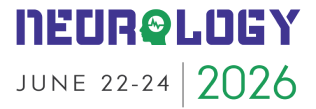Title : The additive impact of obstructive sleep apnea syndrome and atrial fibrillation on the long-term outcomes in patients with ischemic stroke
Abstract:
Background: Obstructive sleep apnea syndrome (OSAS) and atrial fibrillation (AF) has been previously linked to elevated risk of ischemic strokes. However, the additive impact of both OSAS and AF on the long-term outcomes of patients with ischemic stroke remains largely unknown.
Methods: Overall, 401 patients with ischemic strokes treated at the ? Hospital during January 2018 and April 2020 were included in this prospective study. Patients were categorized into the 4 groups based on the status of OSAS and AF: OSAS-/AF- (reference group), OSAS-/AF+ group, OSAS+/AF- group and OSAS+/AF+ group. The primary outcome included a composite of all-cause mortality and cardiovascular events (stroke recurrence, myocardial infarction). The Cox proportional hazard ratio was applied to evaluate the associations between OSAS/AF status with the primary outcome.
Results: There were 251 (62.59%), 59 (14.71%), 54 (13.47%) and 37 (9.23%) patients in the OSAS-/AF- group, OSAS-/AF+ group, OSAS+/AF- group and OSAS+/AF+ group. During a median follow-up time of 41 (IQR 23-50) month, a total of 39 all-cause mortality and 53 cardiovascular events had occurred. The hazard ratios and 95% confidence intervals (CI) for the primary outcome were 1.42 (1.02-2.03), 1.31 (1.01-1.82) and 3.21 (1.46-5.32) for the OSAS-/AF+ group, OSAS+/AF- group and OSAS+/AF+ group, respectively, as compared with the reference OSAS-/AF- group (P for trend < 0.001) after fully adjustment. Subgroup analysis showed that the results were robust among patients with different age, sex, hypertension and diabetes status.
Conclusions: The presence of both OSAS and AF significantly increased the risk of all-cause mortality and cardiovascular events in patients recovering from ischemic stroke. Appropriate measures to manage OSAS and AF may be beneficial for improving outcomes in this patient population.
Audience Take Away Notes:
- Both OSAS and AF could increase the risk of all-cause mortality and cardiovascular events in patients recovering from ischemic stroke.
- This research give a advice to clinical physicians that how to choose the most appropriate measures to manage OSAS and AF may be beneficial for improving outcomes.
- The results of this research are based on a 401 subjects research, the conclusion is convinced.




